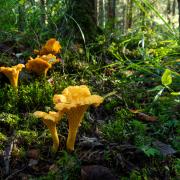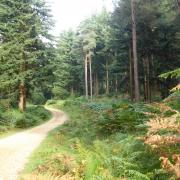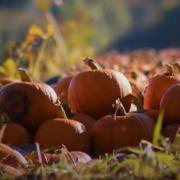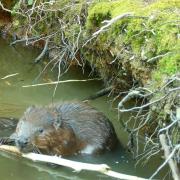Many wonderful species make a home on Hampshire’s heathland, including those that favour warm, open habitats with bare ground, sandy soils, and low vegetation. We are fortunate that many reptiles that can no longer be found elsewhere in the UK, may still be seen in our region.
The most common and largest is a grass snake, recognised by its yellow and black collar, pale belly, and dark markings down the sides. Like all reptiles, grass snakes hibernate, usually from October to April, emerging in the warmer months to court and breed. Grass snakes are likely to be found basking near an area of water and damp vegetation, close to food sources of amphibians, small mammals, and fish.

You might spy an adder from the diamond patten along its back, although the elusive species can be hard to spot due to their incredible camouflage. Adders are venomous but shy, with a tendency to flee and will only bite if they feel threatened or provoked. The likelihood of being bitten is extremely small, but medical attention should always be sought for humans and dogs alike.
The smooth snake - an extremely rare sighting – also prefers sultry, dry, and sandy areas and can still be seen on heathland sites across the south of England. It looks a bit like an adder but lacks the distinctive zig-zag pattern along its back.
Look closely and you may spot a lizard. The common lizard is the most widespread and the sun worshipping-species can be glimpsed in sun traps across heathlands, grasslands, woodland, and moors. You may even be lucky enough to have one visit your garden.

Sand lizards are also now rare but heaths in Hampshire, Dorset and Surrey remain the stronghold in the UK with just a scattering of sites elsewhere. By the 1970s, the species was extinct in the New Forest but a captive breeding programme by Forestry England has fortunately led to their re-introduction in our area.
Slow worms - neither a worm or particularly slow - are legless lizards and will also seek out a balmy resting place, with a fondness for mature gardens and allotments, where they like hunting around the compost heap.
Our heathlands provide a nurturing environment for these reptiles alongside a wide range of flora and fauna. The low nutrients and acidic soil can be a harsh place for plants, but many have adapted including heather, gorse, broom and tormentil. The dense root systems of the vegetation help to store, or lock up, carbon which reduces the concentration of the greenhouse gases that are causing climate change.

Creating and preserving habitats for reptile species is one way we can help heathland sites under our management to thrive as they are a signal of a healthy environment. Visit the County Council’s webpages at hants.gov.uk/thingstodo/countryside/finder to plan a visit to these natural wonders including Yateley Common, Castle Bottom, Broxhead Common and Shortheath Common – and keep your eyes peeled for a glimpse of some of the incredible creatures that live here.



























